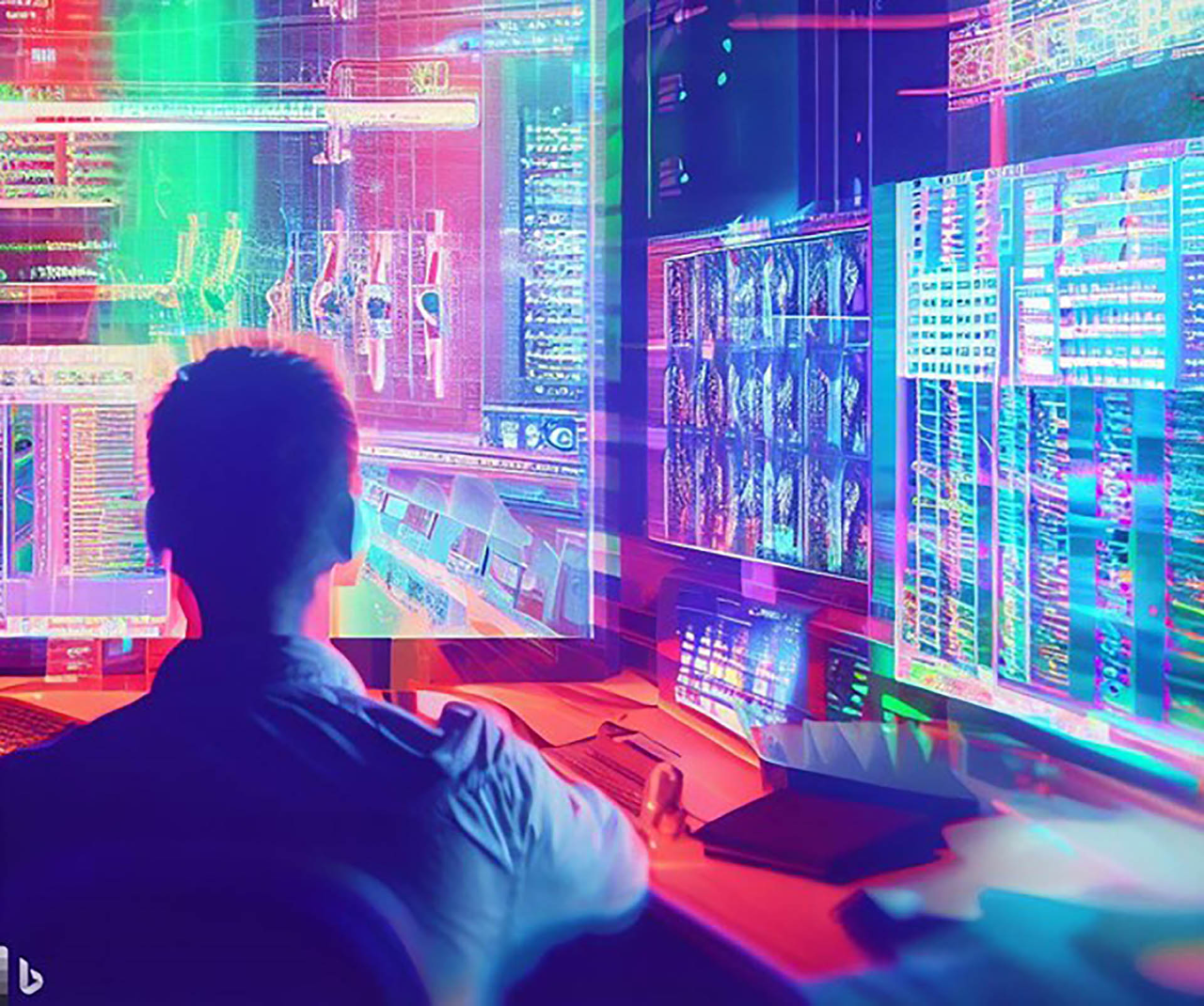notice
Blog: The Role of AI in Improving Building Performance From Energy Modeling to Retrofit Solutions
 AI is the current theme of our era and it is getting involved in all aspects, similarly this image is created by AI | Credit: Bing Image Creator.
AI is the current theme of our era and it is getting involved in all aspects, similarly this image is created by AI | Credit: Bing Image Creator.
With the increasing concerns about climate change and energy efficiency, there is an upsurge in the significance of artificial intelligence (AI) in enhancing building performance. AI has been the main disruptive factor in the past few years. Although the building sector is usually slower in adopting newer technologies, AI has entered the industry. Its involvement has spread from predictive performance to adaptive strategies in buildings. This piece introduces a snippet of the applications of AI in enhancing building performance and its role in propelling a sustainable future.
Energy Modeling and the What If Scenario?
One of the critical applications of AI in building performance is aiding in energy modelling. Using machine learning algorithms and vast amounts of historical and real-time data, AI-driven energy models can accurately predict a building's energy consumption and performance under various conditions. This allows architects, engineers, and facility managers to identify energy-saving opportunities and optimize building design and operation. In this domain, comprehensively modelling and supplying a building with complex information can be replaced with a pattern-identifying machine learning algorithm that can predict how the facility will perform. It doesn't stop here; it even can expect the effect of scenario-driven applications. What if scenarios are the primary driver of this research scope? So, your building energy model becomes a simplified version with many scenarios. But that also comes with some challenges that will be discussed in the last part of this piece.
Smart Building Retrofit Identification
Building retrofits are crucial to our sustainable transition to our existing buildings. A major problem facing this transition is the limited documentation availability of these buildings. AI is a powerful solution here as well. With the help of a few low-cost sensors and information-extracting technologies coupled with a capable machine-learning platform, a complete extraction of patterns of data and building behaviour is possible. It allows a comprehensive understanding of the unseen sides of the building and identifies possible solutions. It can streamline retrofits by analyzing building data, identifying inefficiencies, and recommending targeted improvements. The more impressive win here is the lower risk due to the detailed data collection scheme. It minimizes error risks and provides a reliable outcome.
Continuous Performance Monitoring and Optimization
Building components could be classified as active and passive components. While the passive parts are not changeable after implementation, the active ones can be tuned based on any changes in the building, such as usage, occupant behaviour, etc. Integrating an AI-based building management system can monitor, update, and even take decisions actively for suitable actions. This gives facility managers an all-encompassing understanding of a Building's current performance in real-time, which can offer valuable recommendations for enhancing energy efficiency and occupant satisfaction. It will continuously monitor the building systems. It can spare more time for facility managers to take care of implementations, which decreases the number of buildings out of service, lower repair expenses, and increase building systems' longevity.
Challenges and Opportunities
All this sounds very promising. Yes, but challenging as well. Data is the primary threat to these AI capabilities. AI. Algorithms heavily depend on sizeable quantities of precise and indicative data to generate dependable forecasts and suggestions. With no accurate data, accuracy and applicability come into question.
The approach to solving this problem by installing new sensing infrastructure to collect information and implement actionable modifications to the building also is challenging in many cases. As mentioned, buildings last for centuries and through that, they get stuffed with layers of different systems and versions of technologies. Adding to these systems, a new AI-based system could sometimes be hard to integrate, but still possible.
Looking into the future, there are extensive prospects for utilizing AI to enhance building performance. With the continual progress of AI technology, we will encounter more complex solutions for energy modelling, retrofitting, and optimizing performance. Technologies are creating a powerful synergy transforming numerous industries and soon to be the complete transformation of the building industry.

